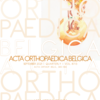Safe zone for minimally invasive calcaneal osteotomy: an MRI study
Calcaneal osteotomy; safe zone; minimally invasive
Published online: Feb 16 2022
Abstract
Hindfoot deformities are often surgically corrected with calcaneal osteotomy. These are increasingly performed via a minimally invasive approach. Identifying a neurovascular “safe zone” for this approach is important in reducing iatrogenic injury. We aimed to identify a safe zone for minimally invasive calcaneal osteotomy without neurovascular injury.
Three individuals independently assessed 100 con- secutive magnetic resonance imaging ankle studies. The distance of the medial neurovascular bundle from the level of the centre of the Achilles tendon insertion was measured. The points measured were centralised in three planes (axial, sagittal and coronal). The three sets of observations were statistically analysed with confidence intervals and intraclass correlation coefficient was calculated.
The mean distance measured by the three observers were 22.91 mm (range 18.2-28.5 mm); 22.81 mm (range 18.7-26.7 mm); and 23.41 mm (range 19.2- 28.4 mm); overall mean 23.0 mm. The mean inter- observer variation was 1.1 mm. 95% confidence interval for observer 1 ranges from 22.45-23.25 mm, observer 2 ranges from 22.52-23.1 mm and observer 3 ranges from 22.97-23.65 mm. Overall 95% confidence interval ranges from 22.8-23.2 mm. Intraclass correlation coefficient for inter-observer reliability is 0.7, indicating strong agreement between the observers.
This radiological study suggests an anatomical “safe zone” for minimally invasive medial calcaneal osteotomy is at least 18 mm (mean: 23 mm) from the level of insertion of the Achilles tendon. Individual variation between patients must be taken in to consideration during preoperative planning.
